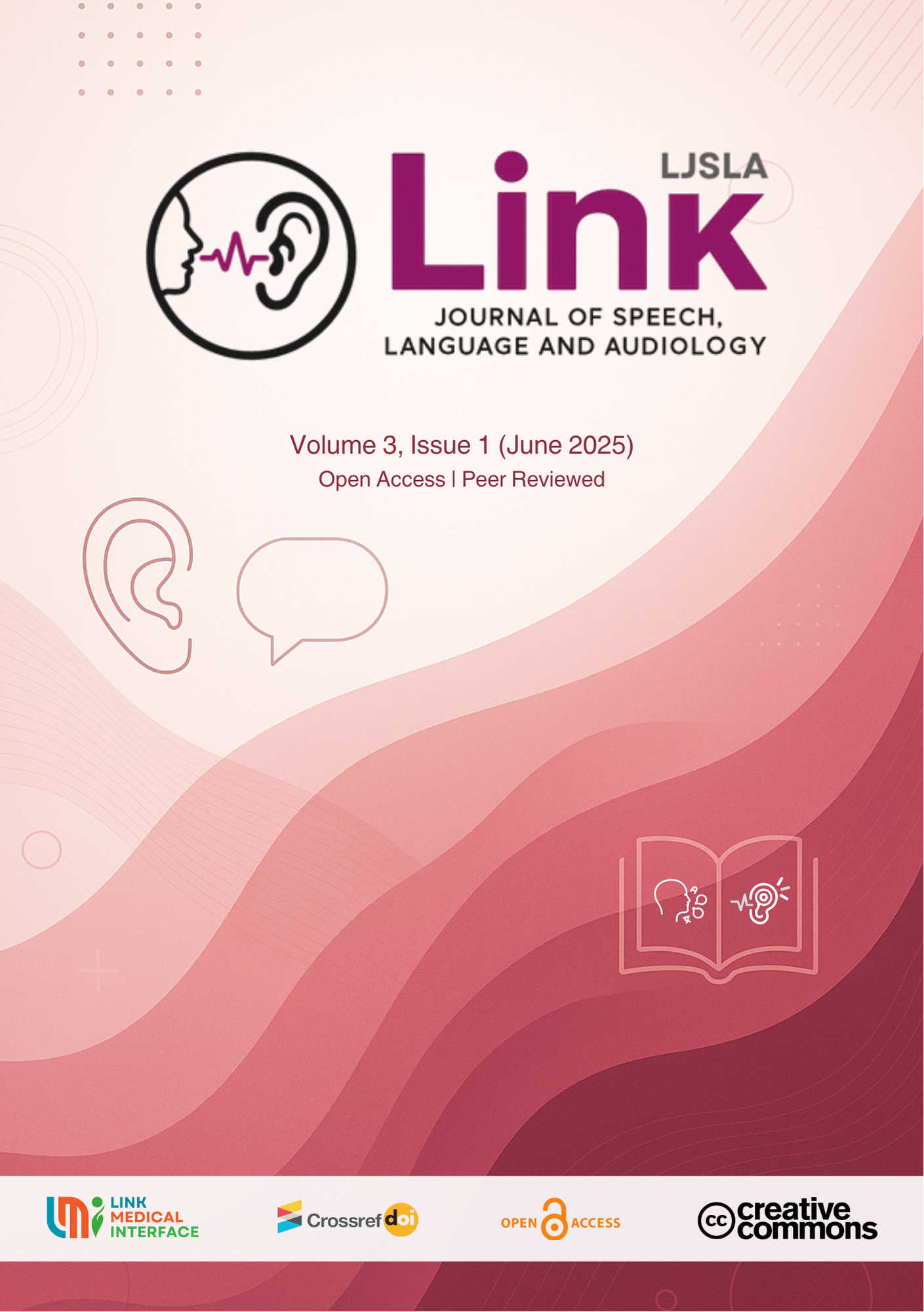Comparison Between Premium and Basic Hearing Aids
Keywords:
hearing aids, premium, basic, user satisfaction, speech clarity, noise performance, adult hearing lossAbstract
Background: Hearing loss adversely affects communication, social participation, and quality of life for millions of adults worldwide. Hearing aids are the mainstay of audiological rehabilitation, but the clinical value of premium versus basic technology remains debated, with inconsistent evidence regarding real-world user outcomes. Objective: To compare user-reported outcomes, feature usability, and overall satisfaction between premium and basic hearing aids among adults with mild-to-moderately severe hearing loss in a clinical setting. Methods: This cross-sectional observational study recruited 196 adults (aged 25–60 years) from a tertiary care audiology center in Lahore, Pakistan, between September 2024 and January 2025. Participants were stratified by device type (102 premium, 94 basic) and degree of hearing loss. Data were collected via a validated, self-administered questionnaire and pure tone audiometry. Key variables included speech clarity, effectiveness in noisy environments, auditory discrimination, feedback noise, sound quality, and usability of advanced features. Group comparisons were analyzed using the Mann-Whitney U test; effect sizes and 95% confidence intervals were reported. Results: Premium hearing aid users reported significantly higher satisfaction across all measured domains, including speech clarity (“excellent” in 52.9% vs. 4.3%), effectiveness in noise (93.1% vs. 11.7% “very/extremely effective”), and feature usability (AutoSense “very useful” in 68.6% vs. 0%; Bluetooth “very useful” in 65.7% vs. 0%), with all p-values <0.001 and large effect sizes. Distributions of composite satisfaction scores were higher and more consistent in the premium group, with non-overlapping confidence intervals across degrees of hearing loss. Conclusion: Premium hearing aids deliver substantially superior user satisfaction, feature usability, and functional performance compared to basic models for adults with mild-to-moderately severe hearing loss. These findings support the clinical value of advanced hearing aid technology for enhancing patient outcomes in routine practice.
Downloads
Published
Issue
Section
License
Copyright (c) 2025 Rana Hassan Masood, Faiza Mushtaq, Hafiza Fatima Rafique, Ayesha Masood, Yashel Waseem, Khadija Ali

This work is licensed under a Creative Commons Attribution 4.0 International License.


